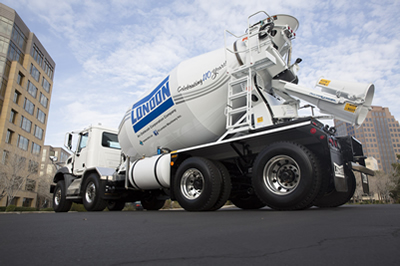National Ready Mixed Concrete Association and its Truck Mixer Manufacturers Bureau (TMMB) affiliate question cost and weight factors attending a prospective National Highway Traffic Safety Administration (NHTSA) requirement that heavy-duty trucks bear stronger rear underride guards than presently compliant models. Preliminary estimates indicate the newer guards would add $307–$453 and 169–210 lb. to vehicle cost and weight, and represent $925 to $1,505 in life cycle fuel consumption.
“Adding more weight to mixer trucks for compliance with each and every new regulation results in the industry being forced to reduce payload,” notes NRMCA Senior Vice President of Compliance and Regulatory Affairs Kevin Walgenbach in comments to the U.S. Department of Transportation. “The industry is then forced to use more trucks, making more trips to deliver the same amount of ready mixed concrete. More trips means increased emissions, increased fuel consumption, more trucks sitting in traffic, and longer hours for industry drivers.”
NRMCA and TMMB jointly weighed in on “Rear Impact Protection, Lamps, Reflective Devices, and Associated Equipment, Single Unit Trucks,” an advanced notice of proposed rulemaking NHTSA published in July and opened to public comment through late September. The underride guard requirements in “Rear Impact Protection” would approximate those of the Canadian Motor Vehicle Safety Standard (CMVSS)—more robust than the Federal Motor Vehicle Safety Standard-compliant models presently specified for U.S. heavy-duty trucks.
|
|
| A London mixer Oshkosh Corp. exhibited at 2015 World of Concrete bears a Canadian Motor Vehicle Safety Standard-compliant underride guard, whose robust characteristics have caught the eye of U.S. regulators. |
“NRMCA and TMMB anticipate structural changes and upgrades in order to accommodate a heavier, larger rear underride guard to cost hundreds more per [Single Unit Truck] SUT,” Walgenbach comments. “These estimated costs bring a potential increase per truck to potentially thousands above current prices [and do] not take into account estimated added lifetime fuel cost.
“When combined with the estimated increase in weight from structural changes and upgrades in order to accommodate a heavier, larger rear underride guard of roughly hundreds of extra pounds per SUT, the total added weight is potentially pushing 1,000 pounds … reducing the potential payload size of a truck mixer by an equal amount. This reduction in payload capacity would have a direct correlation to diminished productivity and increased fuel consumption.
“Weight poses a very unique and continuing challenge to the ready mixed concrete industry. The necessity for manufacturing a ready mixed concrete truck with the lowest possible weight has existed as a market force since the inception of weight regulations, including the federal bridge formula for truck weight restrictions on federal-aid highways … To this end, NRMCA and TMMB recommend that NHTSA include with this proposal an increased weight tolerance or variance in an amount that will offset the increased weight of the CMVSS-compliant rear underride guard and the structural changes to mixer trucks … Such a precedent already exists for auxiliary power units and idling-reduction technology.”
Walgenbach concludes NRMCA and TMMB observations on the “Rear Impact Protection” section with suggestions that NHTSA resubmit a proposed rulemaking for public comment with a completed cost and benefit analysis; an emphasis on determining the best and newest methods for preventing rear underride crashes and their potential accompanying injury and fatality reductions; clarification of whether a forthcoming mandate would apply to new trucks and in-service vehicles; and, consideration of a five-year phase that would allow SUT manufacturers to address challenges of bringing existing designs into CMVSS-level compliance.
The second part of the NHTSA notice, “Lamps, Reflective Devices,” addresses retroreflective material placement on truck rear and side points akin to present trailer-marking guidelines. Commenting on that aspect, Walgenbach tells regulators: “NRMCA and TMMB oppose a requirement for adding retroreflective tape. Mixer trucks manufactured in the United States, as per individual manufacturer safety standards, the North American Transportation Services Association and SAE International have very specific and stringent requirements for labeling mixer trucks and adding identifiers that similarly could act as retroreflective tape. These identifying labels and decals are required to be maintained and/or replaced as needed throughout the life of the mixer truck.”
“In the spirit of fostering safe work environments and increasing safety on our nation’s roadways,” Walgenbach affirms, TMMB is “in the process of discussing adding minimum reflective tape standards to the current standards for mixer trucks. In light of current industry practices and ongoing safety standard improvements, requiring truck mixer manufactures to comply with a new retroreflective tape mandate would be repetitious, arbitrary and economically and practically burdensome.”
